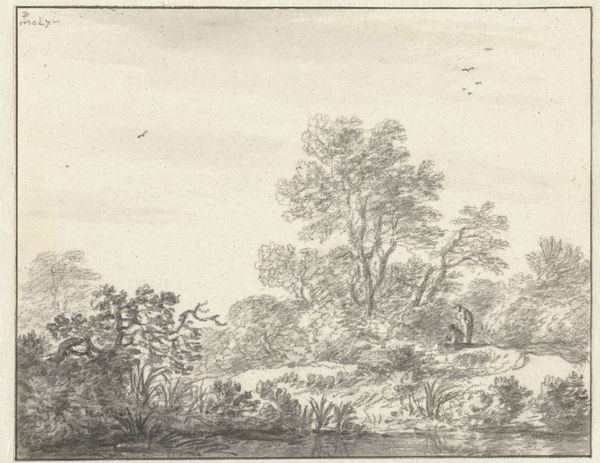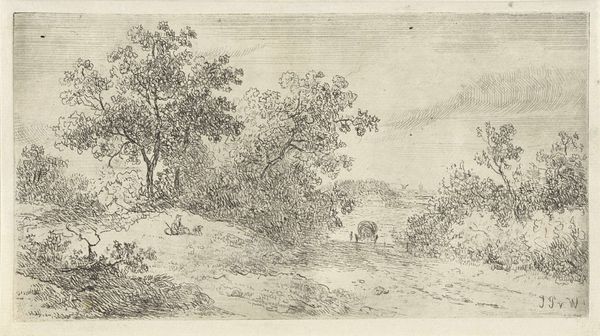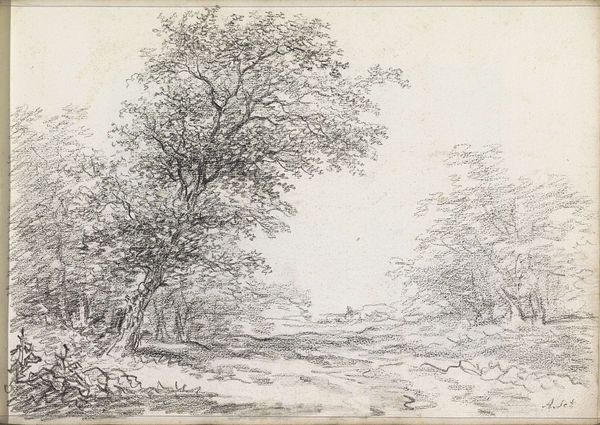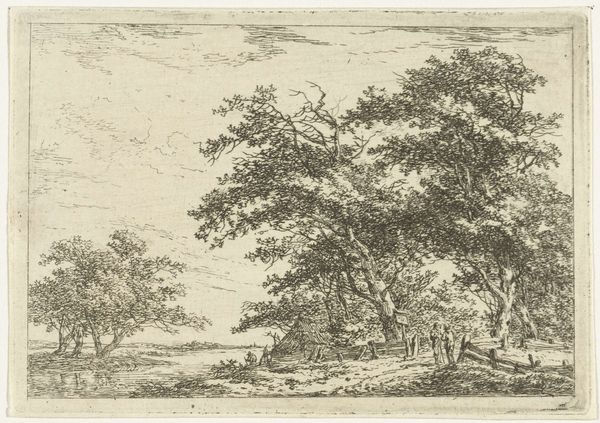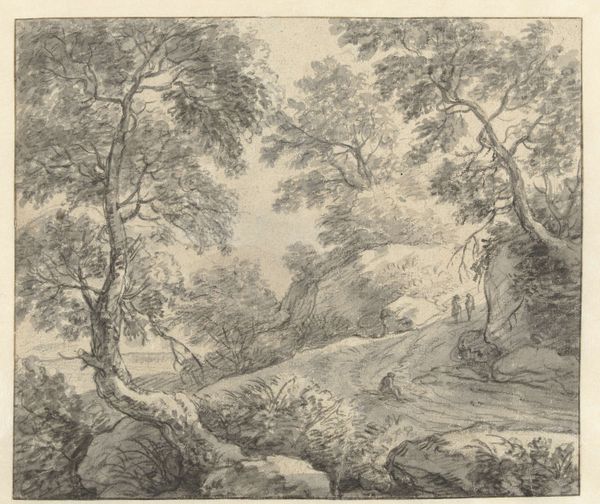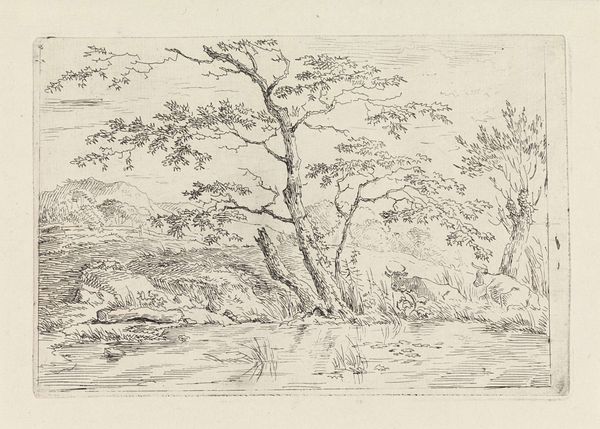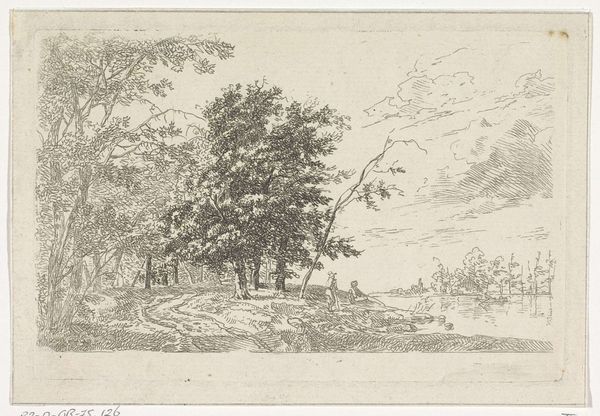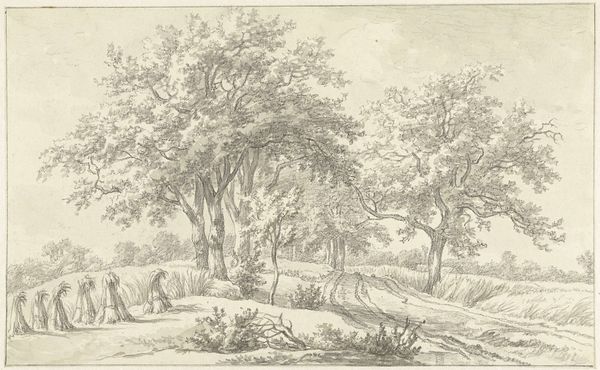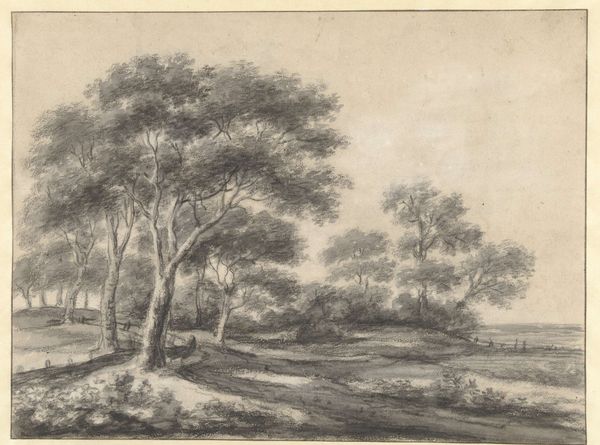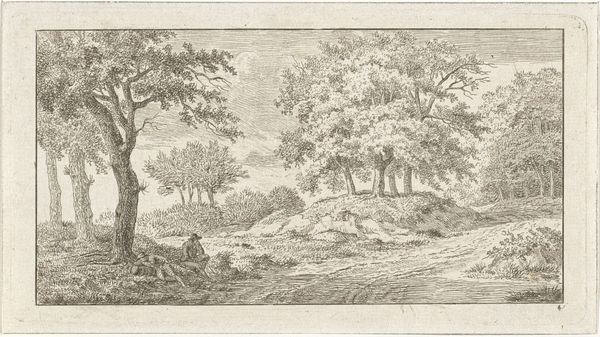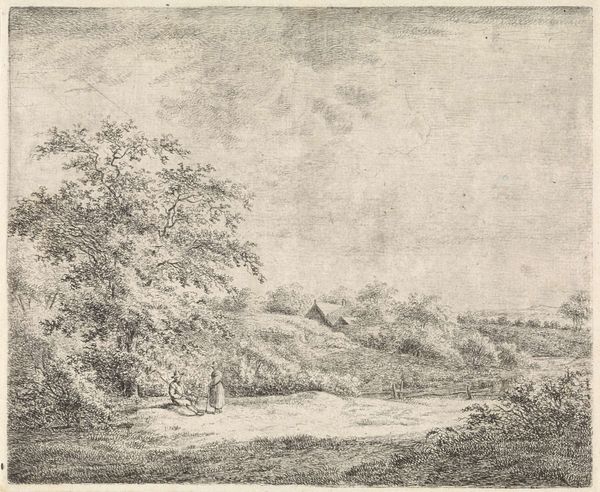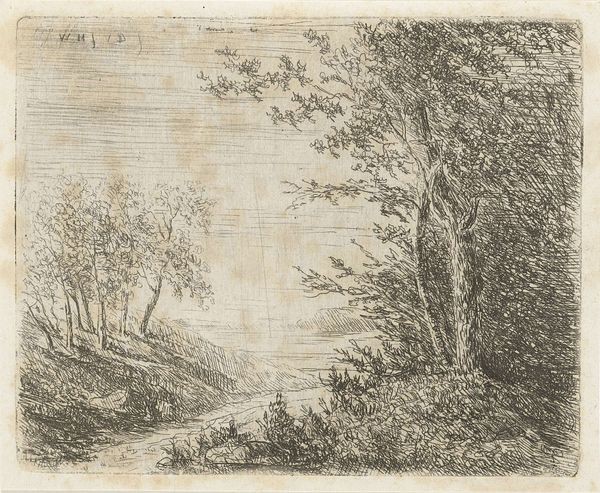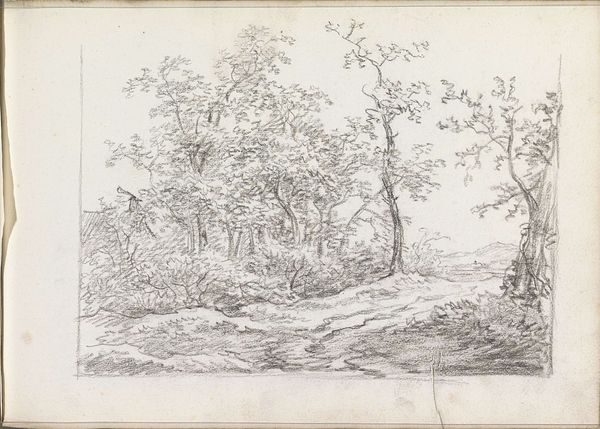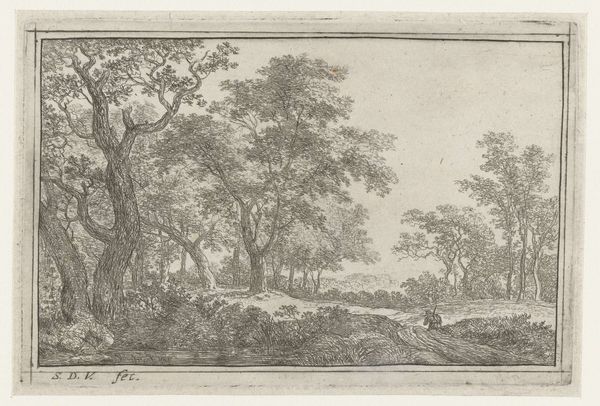
drawing, pencil
#
drawing
#
pencil sketch
#
landscape
#
etching
#
romanticism
#
pencil
#
pencil work
#
realism
Dimensions: height 132 mm, width 181 mm
Copyright: Rijks Museum: Open Domain
Curator: Before us is “Landschap met een huis” (Landscape with a House) by Jan Hulswit, likely rendered sometime between 1776 and 1822. Editor: The tranquility is what strikes me immediately—that, and the delicate layering of pencil marks. It’s remarkably subdued, almost as if rendered from memory. Curator: Indeed. Hulswit works primarily in pencil here, and with such simplicity, it pulls the viewer into a timeless space. You could say this drawing resonates with archetypal images of “home.” Note how the thatched cottage is nestled securely amidst foliage and rising land, as if born directly from it. Editor: I’m intrigued by this notion of timelessness you mention. Look at how Hulswit employs varied techniques, such as etching, alongside the subtle pencil work, blurring any clear distinction between high art and simple craft. What did such choices mean for an artist of the era? Curator: A keen eye! This blending suggests Hulswit moved within different social and artistic circles. Remember that at the time, landscape depictions functioned on many symbolic levels, signifying ownership, nationhood, even personal identity. The house itself represents domestic stability, perhaps reflecting bourgeois aspirations during a turbulent historical period. Editor: Yes, and that’s exactly what pulls me back to the material—this is an object meant for intimate viewing. I wonder if the rough etching indicates it was conceived, at least initially, to become part of a larger series destined for broader circulation? Curator: Perhaps. While such subtleties provide an intimate lens through which we understand not only individual anxieties, but also society’s idealized relationship to nature and dwelling, in a time where land ownership was rapidly consolidating around a new mercantile class. Editor: These muted tones also mask much of what was truly revolutionary back then: the growth of cities, commodification of land, and changing social structure of the Netherlands! Thanks to its materiality, we’re challenged to remember these important conditions of this era! Curator: Exactly, and now, it’s time to move on and see how these material undercurrents shape different landscapes around the gallery. Editor: Very insightful! Let’s see how the language of drawing shifted amidst the winds of history.
Comments
No comments
Be the first to comment and join the conversation on the ultimate creative platform.
